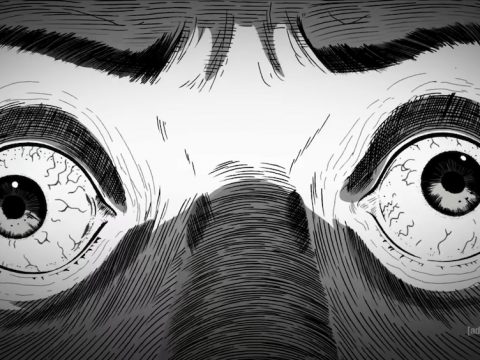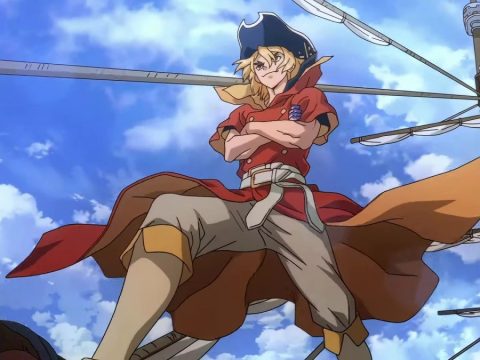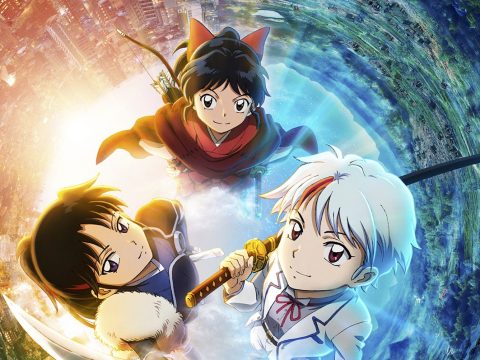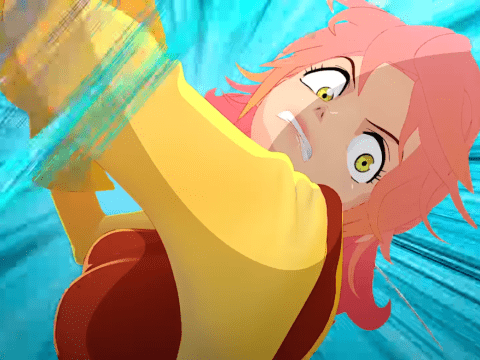
The city has amnesia, Roger’s got a giant robot, and Dorothy’s an android
When Bandai Entertainment went under a few years back, there were several titles in its catalogue that fans prayed would be license-rescued. The Big O was high on that list. One of the most unique anime to come out of Sunrise in the late 90s, The Big O was one of a kind, with equal parts mystery, creeping sci-fi, and robot-on-robot action. It is fondly remembered as part of the glory days of Cartoon Network’s Toonami block. And its popularity was enough that Cartoon Network actually backed its second season! Suffice it to say, news of Sentai Filmworks’ rescue of Big O was met with all manner of hype. The release of a new Complete Collection on Blu-ray is a more than fine excuse to revisit the series, which is still one of the greats.
 Set in Paradigm City, a domed art deco metropolis, humanity and robots go about their lives without any memories of their past lives. But the lost knowledge from those memories has slowly begun to resurface with conspiracies, giant monsters, and rampaging robots. Finding himself mixed up with these bizarre cases is Paradigm’s top negotiator, Roger Smith. Together with the android, R. Dorothy Wayneright, he is capable of summoning a giant robot (or “Megadeus”) known simply as Big O. With each new job, however, Roger finds himself coming closer and closer to the forces that may be holding the answers to Paradigm City’s amnesia.
Set in Paradigm City, a domed art deco metropolis, humanity and robots go about their lives without any memories of their past lives. But the lost knowledge from those memories has slowly begun to resurface with conspiracies, giant monsters, and rampaging robots. Finding himself mixed up with these bizarre cases is Paradigm’s top negotiator, Roger Smith. Together with the android, R. Dorothy Wayneright, he is capable of summoning a giant robot (or “Megadeus”) known simply as Big O. With each new job, however, Roger finds himself coming closer and closer to the forces that may be holding the answers to Paradigm City’s amnesia.
Part of the charm of Big O is its setup. I can best describe the show as equal parts Batman and Ultraseven. It takes Batman’s art deco/film noir lens and third-act set pieces and borrows from Ultraseven’s grounded storytelling, where things just happen to be in a world with freaks of science and giant robots running around. Also, there’s Paradigm City itself. Throughout the series, we are given various teases, small clues that aren’t fleshed out at first, leaving you trying to put the pieces together. But that aspect is window dressing to the show’s self-contained stories.
The benefit of the anthology format is that you don’t require a lot of knowledge to jump in: the city has amnesia, Roger’s got a giant robot, and Dorothy’s an android. That kind of accessibility was more than likely a key ingredient to the show’s success. The other half of the charm lies with the talent involved: The Megadeus/creature designs by Keiichi Sato range from mutant monsters to retro wind-up toys. The stories, penned by Chiaki J Konaka (Digimon Tamers) keep you guessing with more questions than answers. All of this is complemented by some amazing soundtrack work by the legendary Toshihiko Sahashi (Full Metal Panic, Ultraman Gaia, Hunter X Hunter), and the catchy Queen tribute of an opening theme. Really, I could gush about Big O’s general production design for days.
 But then in Season 2, Big O changes gears a bit. This stems from Cartoon Network’s co-producing the show by that point, and their notes to the staff: “More action” and “Solve the mystery.” With this tone shift, Big O suddenly gains a massive arsenal, more robot monsters of the week, and the self-contained nature goes the wayside for a season arc. Big O’s director, Kazuyoshi Katayama, came out and said that he would’ve much preferred the series kept its anthology format … and I’m kind of right there with him. That’s not to say that Season 2 is bad, but I feel that the best that Big O had to offer came from Season 1.
But then in Season 2, Big O changes gears a bit. This stems from Cartoon Network’s co-producing the show by that point, and their notes to the staff: “More action” and “Solve the mystery.” With this tone shift, Big O suddenly gains a massive arsenal, more robot monsters of the week, and the self-contained nature goes the wayside for a season arc. Big O’s director, Kazuyoshi Katayama, came out and said that he would’ve much preferred the series kept its anthology format … and I’m kind of right there with him. That’s not to say that Season 2 is bad, but I feel that the best that Big O had to offer came from Season 1.
My minor grievances aside, The Big O remains an damn fine TV series. Even today, when you ask fans the shows they consider to be synonymous with Toonami, Big O springs instantly to mind. Even now I remember the multitude of online petitions when I was younger from fans who wanted more. While that has long since been made impossible, it’s a somewhat fitting fate for a show that’s always been enigma since day one. After all, we’re still talking about it.
Studio/company: Sentai Filmworks
available: Now
rating: 14+
This story appears in the August 2017 issue of Otaku USA Magazine. Click here to get a print copy.







